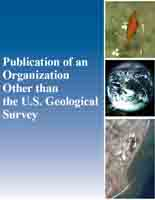Selenium differentially influences methylmercury retention across mayfly life stages
Links
- More information: Publisher Index Page (via DOI)
- Open Access Version: Publisher Index Page
- Download citation as: RIS | Dublin Core
Abstract
Though high mercury and selenium concentrations are individually toxic to organisms, there is a hypothesized antagonistic relationship. This potential mercury–selenium interaction is under-studied in aquatic macroinvertebrates, particularly in relation to complex life histories. We examined the proposed effect of selenium on methylmercury accumulation between four life stages for a parthenogenetic mayfly (Neocloeon triangulifer). We exposed diatoms to elevated methylmercury concentrations and fed them to mayflies exposed to elevated aqueous selenomethionine. We found some support for the mercury–selenium antagonism hypothesis, but it was context-specific. Selenium reduced methylmercury accumulation in high but not low methylmercury environments. Though terrestrial adult life stages had higher mercury concentrations compared to aquatic larval life stages, cumulative life history transfer factor (LHTF; ratio of methylmercury in adult imago to late instar larvae) differed by treatment. LHTF was constant for all aqueous selenium exposure levels at high dietary methylmercury (selenium impacts on methylmercury uptake and loss) but increased with aqueous selenium exposures at low dietary methylmercury (selenium impacts on methylmercury uptake only), suggesting a synergistic enhancement of MeHg transfer between life stages with increased aqueous Se exposure levels. These results suggest that animals eating adult aquatic insects are exposed to higher concentrations of methylmercury than those feeding on larval insects across selenium and methylmercury levels, but interference of selenium on methylmercury accumulation is only present at high methylmercury environments.
| Publication type | Article |
|---|---|
| Publication Subtype | Journal Article |
| Title | Selenium differentially influences methylmercury retention across mayfly life stages |
| Series title | Environmental Science and Technology |
| DOI | 10.1021/acs.est.5c00338 |
| Volume | 59 |
| Issue | 16 |
| Publication Date | April 16, 2025 |
| Year Published | 2025 |
| Language | English |
| Publisher | American Chemical Society |
| Contributing office(s) | Columbia Environmental Research Center |
| Description | 9 p. |
| First page | 8201 |
| Last page | 8209 |


